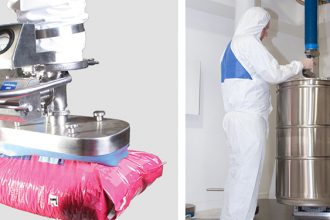Improper Ergonomics When Handling Objects And Awkward Postures Cost Employers Billions Annually In Workplace Injuries

Every week, non-fatal workplace injuries cost U.S. businesses more than $1 billion, with total injuries exceeding $58 billion annually, according to Liberty Mutual Insurance’s 2022 Workplace Safety Index. The annual report, produced by the insurer’s risk control services division, ranks the top 10 causes of serious, disabling (but non-fatal) workplace injuries that caused employees to miss work for more than five days by their total direct costs in workers compensation, medical, and lost-wage expenses.
Among the top 10, two are directly related to improper ergonomics:
- Overexertion involving outside sources (handling objects) – Number 1 on the list of 10, at a cost of $12.63 billion annually.
- Other exertions and bodily reactions (awkward postures) – Number 4 on the list of 10, at a cost of $4.01 billion annually.
The Liberty Mutual report also breaks down the costliest causes of injuries across eight different industries, including four that rely heavily on manual material handling tasks: manufacturing, retail, transportation and warehousing, and wholesale. It further offers recommendations for preventive measures—including training and the deployment of ergonomic equipment and technologies—that can be implemented to help reduce the risk of injuries caused by performing strenuous, repetitive, or awkward movements.
Within manufacturing, the industry loses nearly $8.42 billion annually to serious, non-fatal workplace injuries. Among the top five causes, two are associated with improper ergonomics: overexertion involving outside sources (22.6% of the total at a cost of $1.90 billion), and repetitive motions involving microtasks (8.4% of the total at a cost of $0.71 billion). Recommended solutions include mechanical lifting aids.
In the retail industry, more than $5.25 billion is lost annually to serious, non-fatal workplace injuries. Of the top five causes, two are related to improper ergonomics: overexertion involving outside sources (28.0% of the total at a cost of $1.47 billion), and other exertions and bodily reactions (6.8% of the total at a cost of $0.36 billion). Recommendations include utilizing mechanical devices to move heavy objects, and pre-planning of product delivery and storage.
Nearly $4.67 billion is lost annually to serious, non-fatal workplace injuries in transportation and warehousing. Two of the top five causes correlate to improper ergonomics: overexertion involving outside sources (28.7% of the total at a cost of $1.34 billion), and other exertions and bodily reactions (9.7% of the total at a cost of $0.45 billion). Recommendations include using lifting tables, hoists, and adjustable conveyors, as well as implementing a safety program focused on incident prevention.
In the wholesale industry, nearly $4.17 billion is lost annually to serious, non-fatal workplace injuries. Among the top five causes, two are associated with improper ergonomics: overexertion involving outside sources (30.5% of the total at a cost of $1.27 billion), and other exertions and bodily reactions (11.1% of the total at a cost of $0.46 billion). Recommendations include designing tasks and training workers to prevent multiple touches of the same product and to avoid excessive bending.
Looking for additional recommendations to help reduce the risk of workplace injuries? The members of the Ergonomic Assist Systems & Equipment (EASE) Council of MHI offer a comprehensive collection of free resources to help support industrial ergonomic initiatives.



